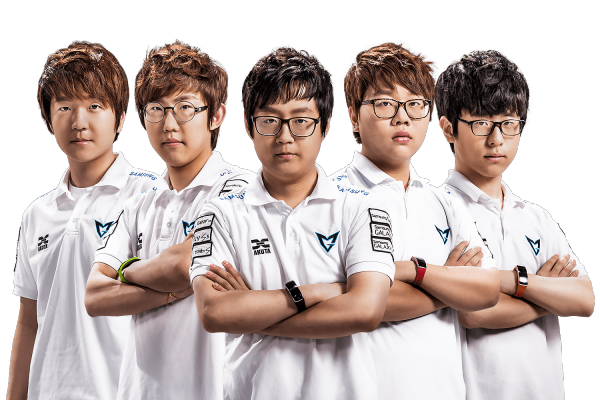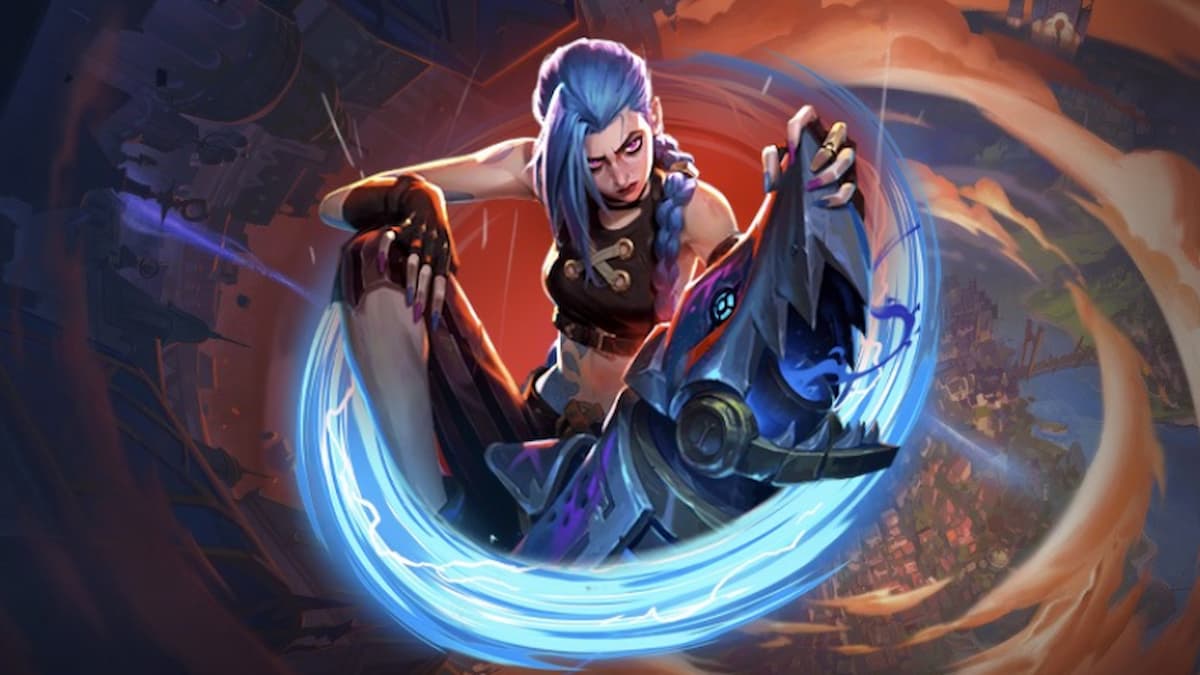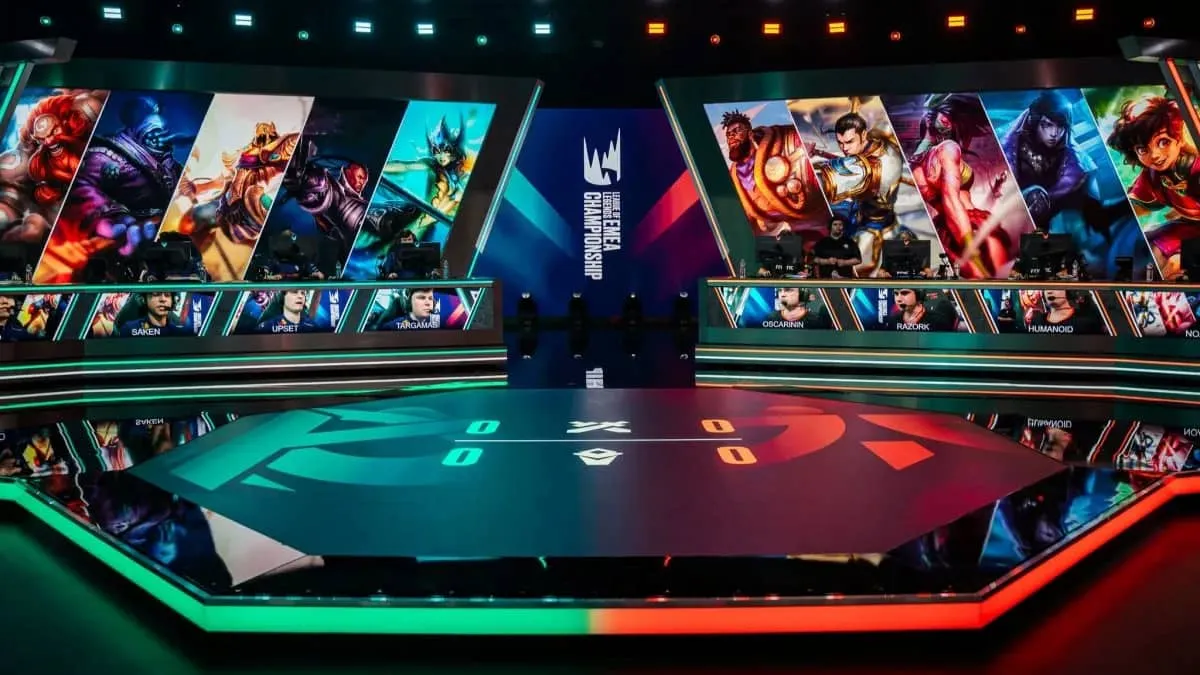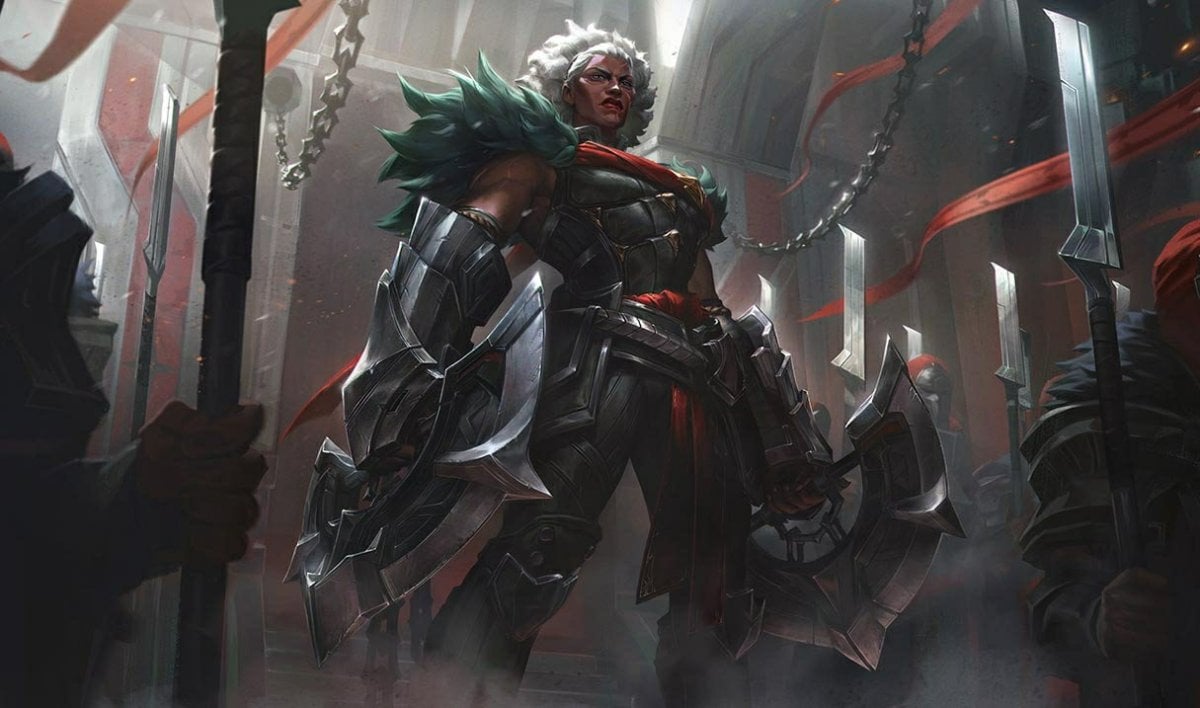
This time last year, SKT1 was in the middle of dominating OGN Winter just a few months after toying with the rest of the world on the way to winning the Season 3 World Championship. If we were to rate the overall performance of each region in that World Championship on a scale of 1-10, it would look something like this:
- Korea: 10
- China: 6
- Europe: 5
- North America: 3
Despite Ozone failing to make it out of the Group Stage, SKT1 won the tournament and Najin Black Sword finished in 3-4th place. In addition, any reasonable observer would have likely come to the conclusion that NJBS was actually the 2nd best team in the tournament, and only failed to make the final because they had the misfortune of being on the same side of the bracket as SKT1. This was an exceedingly strong performance.
Royal Club rode their way to the finals on the back of their ADC, Uzi, who was undoubtedly the breakout star of the tournament. While they failed to taker a single game off of SKT1, their performance was outstanding considering the relative youth of the Chinese region compared to the other major regions. OMG dominated their group alongside SKT1, even managing to take a game off the eventual World Champions.
Europe also showed well at the tournament, with both Gambit and Fnatic taking it to a Samsung Ozone team that entered the tournament with Championship aspirations on the way to qualifying for the Playoffs. Fnatic was able to take down a Cloud 9 team that hadn’t played a competitive game in a month on the way to the semi-finals before losing to Royal Club, while Gambit fell to Najin Black Sword in a series that wasn’t as close as the scoreboard would indicate. The great mystery of the tournament was the poor performance of lemondogs, who were packed some of the best up and coming talent that Europe had to offer.
The Season 3 World Championship did not go well for North America. TSM reduced themselves to a laughing stock by losing game after game, and then playing a troll game to close out the Group Stage. Vulcun fared only marginally better, with the highlight of their tournament being a victory over Fnatic. Cloud 9 lost their only series of the tournament to Fnatic in a hard fought set that saw Cloud 9 inexplicably gift xPeke his signature Champion twice with pretty much the outcome you’d expect.
As you can see from above, it’s pretty clear that the gap between East and West was massive at the end of Season 3, though it does seem unfair to group Europe in with North America considering their relative performances. It’s an oddity of eSports journalism that I have never quite understood. Europe and North America are separate regions that, despite the rush to ally against the Korean juggernaut, have a long and healthy rivalry with each other in addition to vastly different styles.
More of the Same
The first International Tournament of Season 4 brought more of the same Korean dominance with KT Rolster Bullets taking IEM Katowice without dropping a single game. That feat included 2-0 and 3-0 sweeps of the Gambit and Fnatic rosters that had given Samsung Galaxy Ozone such trouble at the Season 3 World Championship. It also featured Fnatic getting the better of Cloud 9 again and China’s two representatives, iG and WE, tanking it pretty hard. Though it must be said that neither team was considered good even back in their home region.
All-Stars 2014 again saw a Korean team take home the trophy, with a SKT1 team that was struggling back in Korea sweeping their way through the tournament with relative ease. Despite dropping a game to them in the Group Stage, OMG was able to get revenge in a 2-0 sweep over a Cloud 9 team that was missing Hai due to health reasons in the Semi-Final. Europe’s representative Fnatic had their first truly awful tournament performance in years, dropping games to everyone but TPA, and failing to put up much of a fight against SKT1 in the semi-finals. Thanks to the general lack of teams, the arbitrary method through which Korea’s representative was decided, Cloud 9’s incomplete roster, and Fnatic admitting they didn’t practice at all, much was said to minimize the importance of the outcome of the tournament. But the harsh truth was that for the 2nd time in two months, a Korean team that was not the best team in Korea rolled into an international competition and didn’t lose a single game.
False Hope
Much of the second half of Season 4 was spent by the western community trying to rationalize their ability to compete with Korea at the upcoming World Championship. A combination of a number of story lines likely gave Western fans a little more hope than was probably logical. For starters, many remembered the choking of Dade and Samsung Galaxy Ozone at last year’s World Championship and underestimated the powerhouse lineup that was about to take center stage. But Dade had grown so much in that time period that he now posed a legitimate threat to Faker’s crown as the King of the Mid lane as a member of Samsung Blue, and Samsung White had long since shaken its choker reputation. However, the primary culprit for the underestimation of Samsung White was their supposed weakness in the face of their sister team, Samsung Blue. This vulnerability was blown increasingly out of proportion as the World Championship approached, despite Montecristo and a number of analysts professing the belief that Samsung White remained the best team in the world and was unlikely to lose Samsung Blue the next time they met.
In reality, the community’s overestimation of their respective regions and subsequent disappointment after yet another Korean victory hid the fact that real progress was made by Western teams this year.

The Season 4 World Championship
It’s easy and lazy to look at the outcome of the 2014 World Championship and assume nothing changed in the past year. After all, a Korean team won in dominating fashion over the same Chinese team that SKT1 faced in last year’s final. In reality, there were a number of differences that point to 2015 being a watershed year for competitive League of Legends. First, let’s repeat our exercise from earlier and rank each Region based on performance.
- Korea: 10
- China: 7
- North America: 6
- Europe: 5
This year, all three Korean teams made it out of the Group stage. Like last year, the eventual winner eliminated a fellow Korean team that was likely better than the opponent they would face in the Finals. Samsung White was undoubtedly the most complete League of Legends team ever assembled. Samsung Blue, while slightly over-estimated, was still likely the 2nd best team in the world this year. Najin White Shield poses an interesting case after struggling against Alliance and Cloud 9, they then got swept by an OMG team that had similar struggles against the likes of LMQ and Fnatic. While NJWS proved to be not nearly as good as originally thought after their dominating run through the Korean Qualifier, they were still one of the best eight teams in the tournament.
While China remains the most unstable of the four major regions, nobody questions the mechanical skill of their players. One of the hottest topics heading into the world championship was whether Deft or Namei were the best ADC in the world. Uzi’s performance throughout the entire tournament proved that he’s in a class of his own in international competition. OMG shook off early struggles to make it all the way to the Semi-finals before being knocked out by Royal Club. EDG and Namei were vastly over-estimated heading into the World Championship as part of the nightmare group A with Samsung White. Judging by their performance, they were lucky to be placed in a group with a wildcard and a second tier SEA team. The overall level of play by the Chinese team showed substantial growth over last year’s representatives.
North America was the most improved Region of the tournament, threatening to have all three teams advance to the quarterfinals as Cloud 9 took down NJWS and trusted in lady luck to make it to the Quarterfinals while LMQ had themselves positioned to make it out on the final day before misplaying themselves out of a quarterfinal spot. Despite this, their performance was admirable considering how little respect they received heading into the tournament. TSM managed to be the only other team to take a game off of Samsung White besides SHRC. Even thought SSW clearly was not taking them seriously in the Picks and Bans phase, once they entered the game TSM clearly earned their victory in a surprisingly dominating performance. Similarly, Cloud 9 was able to take a game off Samsung White as well, and briefly threatened to take the series to a game five in one of the most engaging best of fives of the tournament. While the growth of North America on the world stage this past year is measured more in inches than miles, it was more than anybody would have guessed halfway through the season.
The 2014 World Championship was arguably Europe’s worst ever. Neither Alliance, Fnatic or SK Gaming made it out of the Group Stage. SK Gaming’s young roster proved they weren’t quite ready for their closeup when their star jungler, Svenskeren got himself banned for the first half of the group stage for choosing a racially insensitive name for his SEA practice account. Alliance cost themselves a chance at the playoffs when they lost to Kabum eSports, fulfilling the prophecy of Lord Crumbz that the Brazilian team would win at least one game. Fnatic continued their history of struggling to give 100% all the time and maintaining focus, failing to turn a surprise victory over Samsung Blue into a spot in the Quarterfinals despite being in the driver’s seat.
Aftermath
The 2014 World Championship was a watershed moment for competitive League of Legends. It marked the last tournament that OGN organizations would be allowed to field two teams, and the last tournament before Riot’s new inter-regional movement policy went into effect. But the biggest outcome of the tournament was the famed Korean infrastructure breaking at the seams. With Chinese Organizations willing to pay hundreds of thousands of dollars for top Korean talent, the month after the World Championship ended marked a mass exodus of talent from Korea to China. In the months since, armchair analysts have wondered whether we’re witnessing the end of Korea’s dominance. But those who think so have clearly not been paying attention. SKT1’s remade roster looks as strong as ever, while Jin Air and other upstart organizations look to break their way into the top tier of the region. The truth is, Korea isn’t going anywhere. And the even harsher truth for Western Fans is that Korea will continue to churn out top level players while a large number of Korea’s star players, many of whom are still in their prime, just left Korea for China. So when we ask whether the gap between East and West has closed, it’s hard to make an argument in support of that idea. In fact, with Chinese region experiencing such an influx of talent and expertise, it would seem the west now has two juggernaut regions to contend with. However, that doesn’t mean the west didn’t achieve real growth this year.
Season 4 saw a number of Western Organizations begin to fully commit to the level of infrastructure that has been the norm in Korea for a decade. They brought in full time coaches, analysts, chefs, sports psychologists and life coaches. Gaming Houses are not only common in the LCS, but the Challenger scene as well. Aging organizations finally made the call to part with floundering players and invest in the future. Halfway through the season, Europe and North America’s best teams were unable to even take a game off of average Korean teams. By the end of the year, they were threatening to knock one of Korea’s best teams out of the Championship, and taking games off the two best teams in the world. Yes, winning a single game is a small victory. But every journey, big or small, begins with the first step.
To wrap things up, No, the gap hasn’t closed. Korea is still the strongest region, and China just got exponentially stronger. But North America had their best showing ever at a World Championship, and Europe began to lay a solid foundation for future success after lagging behind North America in a willingness to develop the kind of infrastructure necessary for sustained success. It’s now a little easier to imagine a future World Championship where Western teams enter on an equal footing.





Published: Dec 26, 2014 09:34 am